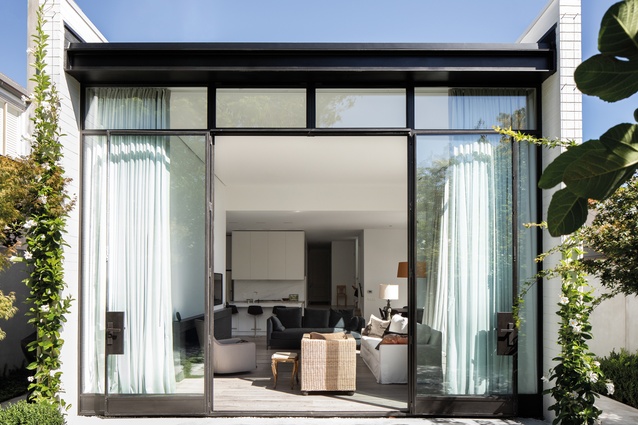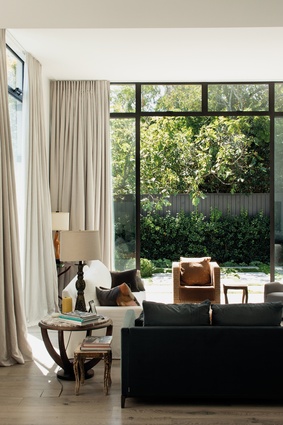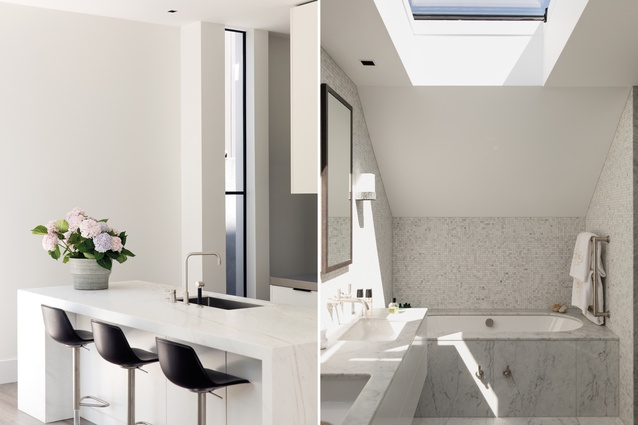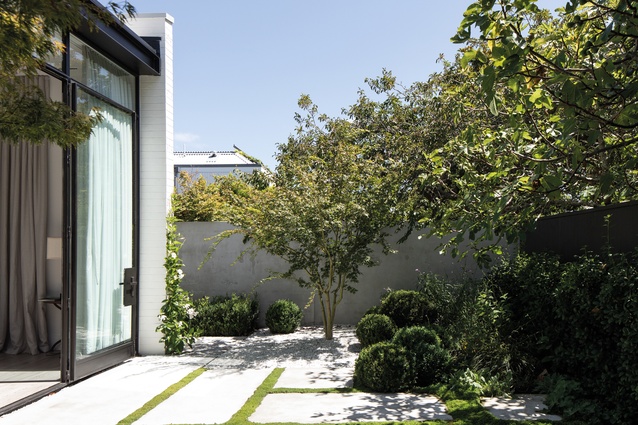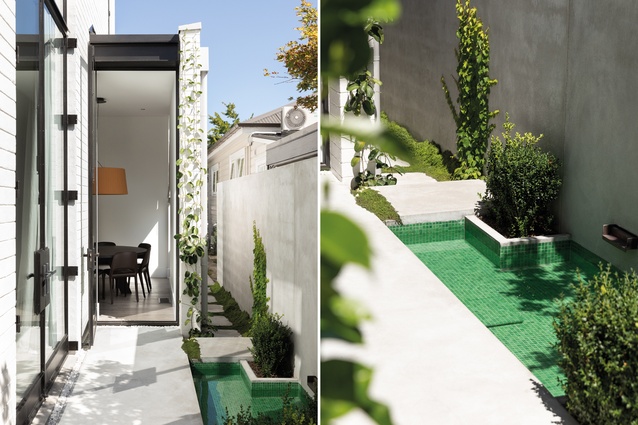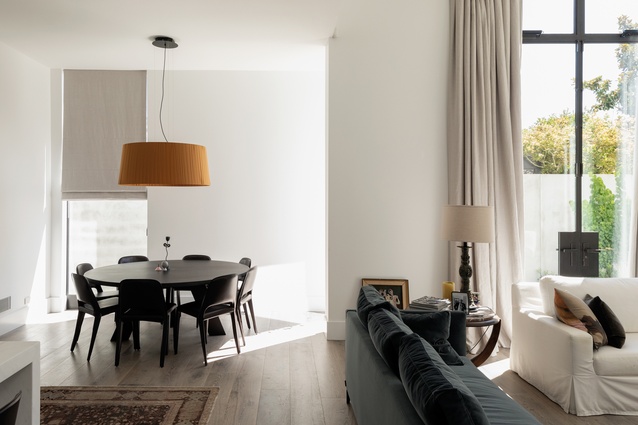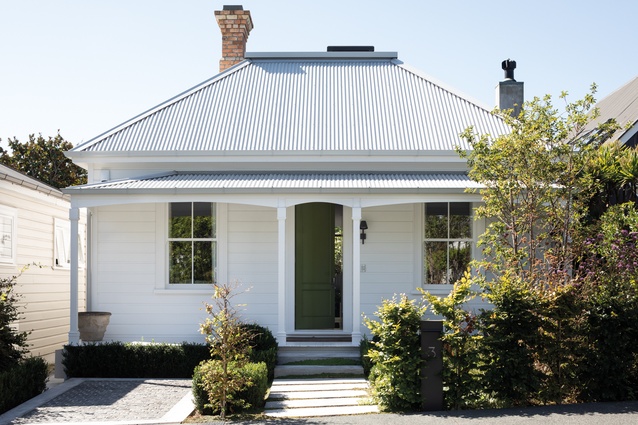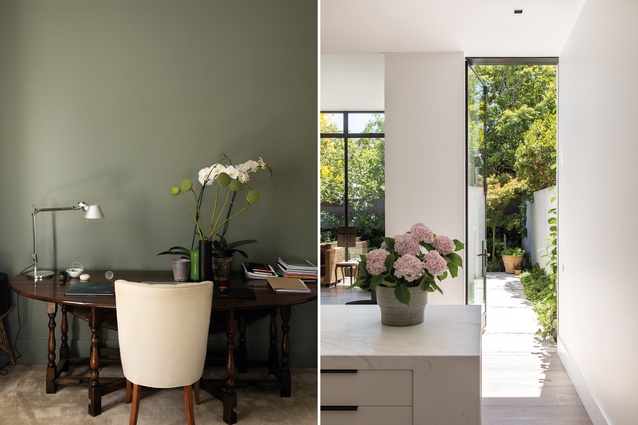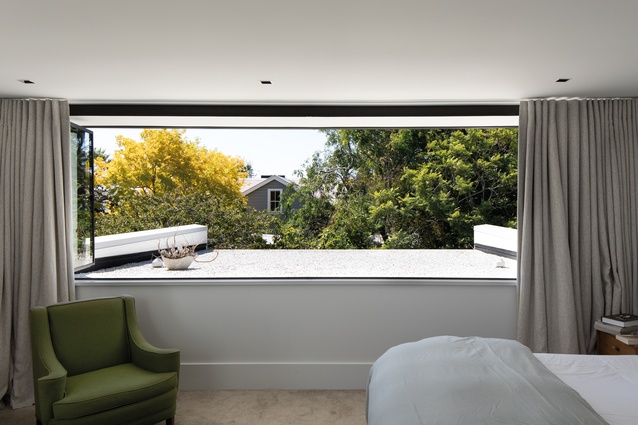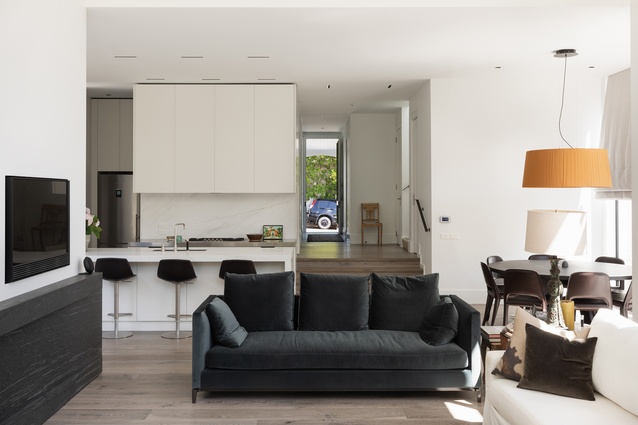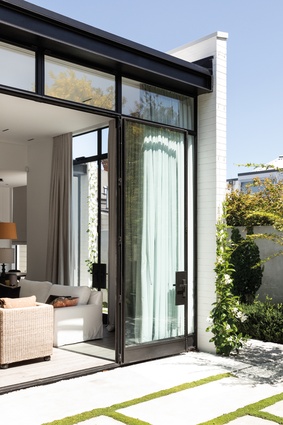Parnell renovation: Small and tall
This humble working man’s cottage has been transformed into a beautiful light-filled home, with an impossibly high ceiling, by Jack McKinney Architects.
When architect Jack McKinney first visited this square-front villa in Auckland’s Parnell, he found a modest two-bedroomed house, built in 1903, which had enjoyed only one rather questionable alteration in its 115-year existence.
“It had a little lean-to on the back, a kitchen window just high enough that you couldn’t see out, some seriously groovy 1960s’ wallpaper and zero connection to the backyard,” McKinney explains.
The new home-owners, understandably, were keen to rejuvenate the house but were mindful of the need to do so within the constraints of the recently implemented Unitary Plan, under which the house fell within the Special Character Areas Overlay.
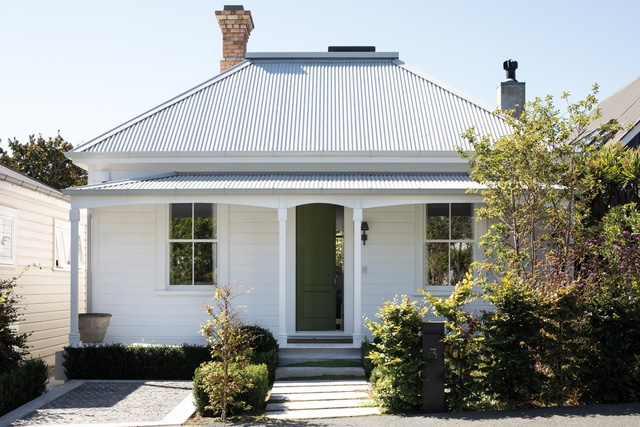
“In these old suburbs that are in conservation areas, even where the house is built on the site is part of the story of how the suburb developed,” says McKinney. “In theory, you can read the suburb by things like the positioning of the house and whether or not it has a chimney, which would have been used for cooking. You need to maintain that continuity and coherence – you don’t want to muddy the waters.”
The villa is situated on a relatively flat 308m2 site and the challenge was to increase its floor area without increasing its overall footprint. The balance between house and garden had to be just right and particularly so given the house was to be moved back on the site by 1.5 metres to accommodate off-street parking at the front.
What resulted is a cleverly conceived, beautifully constructed house that effectively transitions, like a telescope, opening variously outwards and upwards at three-metre intervals.
The sage-green front door opens to reveal a narrow entry hall and, here, you find yourself in the original house. The two rooms on either side are exactly as they were in terms of size, but their doors have been moved slightly and raised to a height of 2.4 metres. A hint, perhaps, of what is to come.
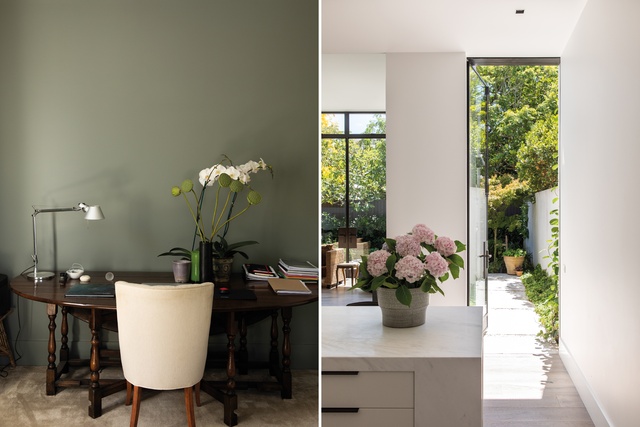
The hall then widens and a discreet stair heads up to the left while another leads down into the next space. “In our minds, we have the old, existing, original house and we treat it as such, and then, where the floor steps down, architecturally, there’s a change in material and, to some degree, language and that occurs from that line,” says McKinney. To mark this juncture, the architect has placed two vertical pieces of glazing on opposite sides of the house where the old and the new meet: one in the laundry and the other between the kitchen and scullery.
Dropping down almost a metre to the new space enabled McKinney to work his magic above, with the master bedroom being placed directly over the kitchen and dining area. “Because we had no floor area to play with and we haven’t really added to the footprint, we’re working the vertical space to create the scale.”
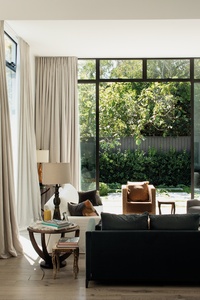
In order to build into the roof, it had to be re-pitched at a slightly steeper angle and this was carefully done in such a way that the finish, particularly from the front, still looks correctly proportioned for the square-front villa. Behind, what was previously a double hip roof with an internal gutter was filled in to accommodate the master bedroom and bathroom, both neatly tucked into the attic space and linked to the stair by a sky-lit passage.
Back downstairs and the floor plan narrows as it transitions to the final space – the living room – but, here, without the constraints of the master above, the ceiling pitches skywards to a stud of four metres, a move which has earnt the award-winning project the befitting name: ‘The Small Tall House’. The entire back wall of this light-filled, high-ceilinged living space is fully glazed with Crittall joinery and opens to an elegantly landscaped garden.
The narrowing of the floor plan for this final stage of the house not only allows for greater outdoor space but, more importantly, it delivers a series of beautiful, poetic moments.
“The walls that run parallel with the boundary are broken open at the ends and that gives you all these nice view shafts through,” explains McKinney. “So, rather than making it a box that’s sitting solidly with solid corners, it’s a series of walls that are staggered, running parallel with each other.”
This affords the home-owners some privacy from their neighbours either side but it also allows the eye to travel out into the garden through a series of apertures and small moments, which offer both light and views, rather than simply through one large, framed view at the northern end of the house. This, perhaps, is the essence of this calm, aesthetically refined home – as it unfolds exquisitely, carefully transitioning between old and new, it offers small, indelible moments of beauty in an alteration more than a century after its creation but, undeniably, well worth the wait.
***

Material Palette
Jack McKinney discusses some of the materials chosen for the addition to the Small Tall House.
Tell us about the Crittall steel joinery. Did you specify it or was it the client’s choice?
We have used steel joinery before quite often but, in this instance, it was our client’s preference.
Were there any issues in terms of the size of the doors and the double glazing?
There was some complexity for the manufacturers because of the scale of the doors and the large notches in the glazing required for the plates on which the hardware is mounted. Some of the high fanlights above the doors are automated so that they can be opened without climbing on a ladder.
The exterior white bagged block walls are built with half-height blocks. Why is this?
Normally the concrete blocks are 400x200mm but we used 400x100mm here for their elegance. With mortar in the vertical spaces in between, the bagging (plastering over the top) revealed only the horizontal lines, which, in some way, references the timber weatherboards of the original villa.
This article first appeared in Houses magazine.


